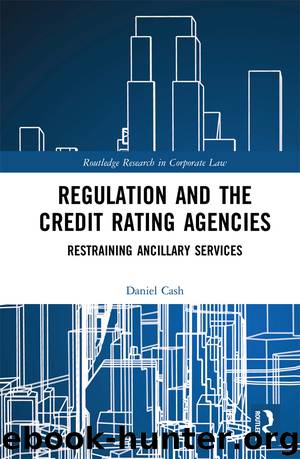Regulation and the Credit Rating Agencies by Daniel Cash

Author:Daniel Cash
Language: eng
Format: epub
Publisher: Taylor & Francis (CAM)
3Why the agencies transgress and what allows them to do it
Introduction
In the conclusion of the last chapter, it was declared that only by acknowledging the actual can we make truly impactful reforms. The divergence between the actual and the desired is such that predominantly focusing on the desired results only in an increase of that divergence. So, to attempt to understand the divergence more, so that we can begin to position a reform proposal as effectively as possible, it will now be important to examine what allows the agencies to transgress in the way that they do and why they do so. To do that, this chapter will focus on three major elements of the credit rating industry: its oligopolistic structure; its issuer-pays remuneration system (adopted widely within the industry); and finally the reliance on the agencies exhibited by regulators.
These three elements are all crucial components of the divergence. What is also important to note is that they operate interdependently; one cannot survive on its own in the long term. Yet, these elements are not ‘explanations’ for the divergence; they are, in fact, ‘components’ that allow for the agencies to transgress and therefore create the divergence that was established in the previous chapter. The three elements are all predicated upon the existence of a self-interested ethos and as such are all manifestations of that ethos. Although it may seem obvious that a private company would have a self-interested ethos, it is the gatekeeping position that the agencies exploit which dictates that a wholly self-interested ethos is undesirable. This self-interested ethos essentially dictates the conduct of the agencies and the actions that they take, so assessing their adoption of the issuer-pays model or the manoeuvres that the agencies make to preserve their oligopolistic industry structure (i.e. buying out new competitors) can only be truly understood when one considers their underlying ethos.
However, perhaps the most obvious issue here is that it is extremely difficult to prove an entity’s ethos indefinitely, so, with that in mind, the only option available is to conduct a lengthy historical assessment to reveal patterns in the industry’s conduct. A research project that would present a genealogical review of the actions of the leading agencies from their origination to the present day would be beneficial for the field, but for now, such an assessment is beyond the scope of this work. Nevertheless, the literature concerned with the history of the industry reveals an ethos that, up until the late 1960s, was solely concerned with surviving via defence. This manifested itself in smear campaigns against those the agencies had wronged and in concerted legal campaigns to absolutely deny any liability.1
The chapter will begin by assessing one of the key components that allow the agencies to transgress: the oligopolistic structure of their industry. Oligopolies vary by way of the norms that form their parameters, so depending on the product that is being sold, the members of the oligopoly may choose to compete against each other in a seemingly open (but actually constrained) market (i.
Download
This site does not store any files on its server. We only index and link to content provided by other sites. Please contact the content providers to delete copyright contents if any and email us, we'll remove relevant links or contents immediately.
International Integration of the Brazilian Economy by Elias C. Grivoyannis(75661)
The Radium Girls by Kate Moore(11636)
Turbulence by E. J. Noyes(7717)
Nudge - Improving Decisions about Health, Wealth, and Happiness by Thaler Sunstein(7261)
The Black Swan by Nassim Nicholas Taleb(6783)
Rich Dad Poor Dad by Robert T. Kiyosaki(6192)
Pioneering Portfolio Management by David F. Swensen(6089)
Man-made Catastrophes and Risk Information Concealment by Dmitry Chernov & Didier Sornette(5672)
Zero to One by Peter Thiel(5505)
Secrecy World by Jake Bernstein(4404)
Millionaire: The Philanderer, Gambler, and Duelist Who Invented Modern Finance by Janet Gleeson(4114)
The Age of Surveillance Capitalism by Shoshana Zuboff(4000)
Skin in the Game by Nassim Nicholas Taleb(3978)
The Money Culture by Michael Lewis(3857)
Bullshit Jobs by David Graeber(3847)
Skin in the Game: Hidden Asymmetries in Daily Life by Nassim Nicholas Taleb(3736)
The Dhandho Investor by Mohnish Pabrai(3573)
The Wisdom of Finance by Mihir Desai(3538)
Blockchain Basics by Daniel Drescher(3341)
